 Electric
Utilities:
Electric
Utilities:
A Changing Industry,
An Instrument of Change
By Michael Powers © 1990, 1996
Synopsis
Conventional wisdom holds that the electric utility industry is driven
by economic growth, rather than driving such growth; power consumption
goes up in a growing economy, for instance, and declines in a slowing one.
But energy costs tend to be compounded due to the "multiplier effect" to
profoundly affect the costs of capital, raw material, labor, production
and distribution. And like other major U.S. industries which were
formerly regulated -- most notably, transportation and telecommunications
-- the electric utilities are now facing increased competition and deregulation.
The success or failure of utilities to "re-invent" themselves after deregulation,
therefore, may have a significant impact on many other sectors of the economy.
Many experts believe that after deregulation, electricity will be sold
and priced like any other commodity, leading to the emergence of an international
marketplace for "free-market electricity" and related energy services.
The future survival of utilities in this more competitive, global environment
appears to lie in two customer-oriented strategic directions: providing
customers with power at the lowest cost, or at the highest level of service,
or some combination of both.
In such an environment, innovative utilities may choose to forego their
traditional monopoly on power generation, in favor of greater control over
the transmission system which transports the power.
This positions the utilities as "energy brokers" to their customers, buying
power from those with too much, selling power to those with too little
and collecting a reasonable commission for performing these service activities.
In fact, bulk power transfers among utilities have more than doubled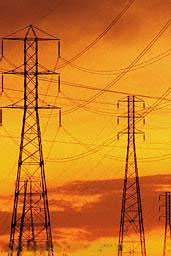 since 1971 and now account for more than 25% of all U.S. electricity generated,
saving consumers over $15 billion a year, a figure that will surpass $30
billion by 2010.
since 1971 and now account for more than 25% of all U.S. electricity generated,
saving consumers over $15 billion a year, a figure that will surpass $30
billion by 2010.
This strategy also transforms utility customers into part-time "energy
producers," a role which many are already assuming through their use of
cogeneration and other alternative energy technologies.
In a true free-market environment, utilities and their customers are then
free to become financial partners in the energy marketplace, rather than
adversaries as they are now under third-party regulation. As partners,
both utilities and their customers have incentives to consume less power
in local markets and produce more power for sale in interstate or international
markets -- a synergistic application of this strategy which has been called
"Energy for Export."
As they struggle to cope with deregulation, therefore, utilities retain
a unique bargaining chip: their potential to "energize" economies
within existing local service areas by lowering energy costs and creating
new value for stockholders as well as stakeholders (customers, suppliers,
employees and home communities).
This strategy could be extended to the global level in the 21st century, through
development of the East/West Energy Bridge, a proposed HVDC intertie between
Alaska and the Siberian peninsula. The project, which would allow
surplus power to be traded between the U.S. and (former) Soviet Union,
is now under study by the American Society of Mechanical Engineers (ASME)
and the U.S. Department of Energy.
Such a linkage would integrate the power grids of eastern and western hemispheres,
doubling the amount of total energy available, creating a truly global
market for electricity and providing a U.S. gateway for selling exported
energy in Pacific rim markets, including the world's most populous nation,
China.
The formal emergence of such an international market for electricity also
provides a long-range strategy for developing renewable energy resources,
such as solar, wave, wind, OTEC, etc., and a new source of revenue for
utilities and local markets potentially rich in such resources.
Energy from these sources tends to be transient or intermittent and is
now discouraged by utilities in favor of power which is more dependable
and more easily dispatched. In a large international market, however,
even these transient sources find their niche, if only on a spot or auction
basis.
In short, electric utilities today find themselves in both the worst and
best of times, facing deregulation and increased competition but also,
the prospect of playing a key role in re-energizing the global economy
by developing "Energy for Export" strategies and by seeking new energy
markets outside of their traditional local service areas.
The
Current Environment for Electric Utilities
In a 1987 project report to the Electric Power Research Institute (EPRI)
entitled Competition: Pressures for Change, Price Waterhouse found
that:
"Changing economics and a regulatory climate favoring more open competition are slowly breaking down traditional business relationships between utilities and their customers. Competitive processes have emerged in other previously regulated industries and are continuing despite economic dislocations. There is good reason to believe this trend will continue."The report cites a number of factors impacting the business environment for utilities, including: a reduction in inflation, a rapid decrease in oil prices, and a restructuring of the economy from heavy, primary industries to service-oriented businesses.
These factors, combined with significant advances in energy-saving technologies and a
 more
aggressive regulatory climate for public utilities, are causing a major
transformation in the electric utility industry. Utilities can no
longer assume that they will continue to operate as natural monopolies,
protected by geographic service area boundaries. To survive and succeed
in the competitive arena, they must be willing to look beyond traditional
methods of operation.
more
aggressive regulatory climate for public utilities, are causing a major
transformation in the electric utility industry. Utilities can no
longer assume that they will continue to operate as natural monopolies,
protected by geographic service area boundaries. To survive and succeed
in the competitive arena, they must be willing to look beyond traditional
methods of operation.
The report identifies three major groups of competitors which, although heavily constrained by regulatory barriers, continue to erode the traditional revenue base for utilities: 1) suppliers of energy from non-electric sources; 2) alternative suppliers of electricity (such as independent producers and other utilities offering lower rates); and 3) customers themselves, who can affect demand through conservation and cogeneration of their own power.
The study, the first ever by EPRI on competition, concludes that: To compete successfully, electric utilities must develop market-driven strategies... Two basic types of competitive strategies are available: become the lowest-cost producer or focus on high levels of customer service support.
The
Critical Need for Timely Change
While the EPRI study is significant for reflecting the mainstream views
of the industry, in many ways it understates the critical need for timely
change. The industry has been operating in an uncertain environment
for at least a decade, but has taken few initiatives beyond retrenchment
in defense of its "natural monopoly."
The landmark legislation of PURPA in 1978 required utilities to buy back
independently-produced power and signaled a clear move at the federal level
toward deregulating the utilities' formerly-protected markets. Just
as disruptive for utilities was PURPA's shedding of federal regulatory
responsibility to the states -- creating, in effect, 50 energy mini-markets,
each with its own rules, regulatory agency and political instability.
Technological catastrophes like Three Mile Island, Chernobyl, the Alaskan
oil spill and the spectre of Climate Change have increased uncertainty
by adding costly environmental regulations, by limiting viable supply options
and by weakening the industry's political leverage for affecting change
of any kind.
Changes in financial markets have also been adverse to the industry by
limiting its ability to recover costs and attract new capital for building
the massive baseload generating facilities that have always been the mainstay
of the industry.
Utilities
"Behind the Eight Ball"
Now, more than a decade later, time is running out. During last summer's
drought, power supply shortages resulted in ominous cutbacks, rationing
and brownouts in many U.S. regions. These conditions could become
widespread by the mid-1990's, according to studies by a host of research
firms, including Chase Econometrics, Applied Economic Research and Utility
Data Institute.
The industry view is summarized in a recent Wall Street Journal article:
"Electricity is the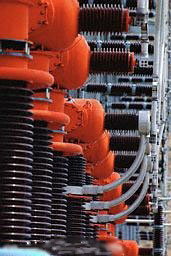 flame of life and it will never go out. But it is about to flicker
in the wind," crimping economic growth and inconveniencing millions, warns
Andrew Hines, chairman of Florida Power Corp.'s parent, Florida Progress
Corp. ... Mr. Hines reflects industry sentiment when he says, "Nobody can
afford to bet the company" by building a multibillion-dollar generating
facility, then waiting to see if regulators will permit full recovery of
its costs.
flame of life and it will never go out. But it is about to flicker
in the wind," crimping economic growth and inconveniencing millions, warns
Andrew Hines, chairman of Florida Power Corp.'s parent, Florida Progress
Corp. ... Mr. Hines reflects industry sentiment when he says, "Nobody can
afford to bet the company" by building a multibillion-dollar generating
facility, then waiting to see if regulators will permit full recovery of
its costs.
In fact, Elizabeth Hannon, president of Utility Data Institute, reports
that over the next several years, the industry plans to add less than 5,000
megawatts of new capacity annually (compared to 20,000 MW per year for
the past 20 years). "We're behind the eight ball," Hannon said.
Some hope remains that independent power suppliers can pick up the slack
left by the utilities. In 1990, an estimated $8 billion in new capacity
will be built by non-utility producers, about as much as by the utilities
themselves. Other studies estimate that non-utility generators will
provide 35-50% of all new capacity over the next seven years.
But larger firms face many of the same pressures as utilities and, as a
group, most of them remain stymied by regulatory roadblocks and exhaustive
bureaucratic procedures. In Florida, for example, the Public Service
Commission can take up to two years to hear a single rate review case.
Even then, prices and other sensitive terms of power contracts must be
set by the PSC, rather than the marketplace, and are thus subject to political
maneuvering.
Hope
in New Directions
Nevertheless, the gloomy forecast contains a few rays of light. One
of them is offered by Philip O'Connor, former chairman of the Illinois
Commerce Commission and currently head of Palmer-Bellvue Corp., a utility
investment and consulting firm in Chicago that lists Commonwealth Edison
among its clients.
O'Connor is "the man responsible for some of the most innovative thinking
in the electric 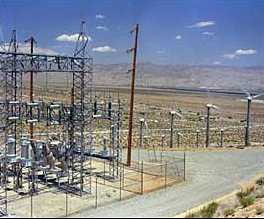 utility
field," according to a Wall Street Journal story and someone who believes
that "free-market electricity is inevitable": When the "revolution"
in the electric utility industry is complete, electricity will be priced
"like any other commodity." Power, he says, will be transmitted from
state to state and from region to region, both under long-term contract
and in a spot or auction market. Many utilities will merge to take
advantage of economies of scale, while others will go private as investors
recognize the greater profit potential of a free marketplace.
utility
field," according to a Wall Street Journal story and someone who believes
that "free-market electricity is inevitable": When the "revolution"
in the electric utility industry is complete, electricity will be priced
"like any other commodity." Power, he says, will be transmitted from
state to state and from region to region, both under long-term contract
and in a spot or auction market. Many utilities will merge to take
advantage of economies of scale, while others will go private as investors
recognize the greater profit potential of a free marketplace.
O'Connor is not the only industry expert urging utilities to take a pro-active
stance toward these "inevitable" changes; he is, however, among the most
articulate and well-respected. And he has a track record of success.
"Phil O'Connor has forced us to think. His ideas are important,"
says Douglas Bauer, senior vice president, strategic planning, for Edison
Electric Institute, the industry's trade group ..."He is taken very seriously
in the investment community. He was among the first to predict the
changes now occurring," says Ernest R. Liu, utility analyst for Goldman,
Sachs & Co.
O'Connor may also be the first to propose setting the value of a utility
on a cash-flow basis rather than a traditional asset-value basis, "a whole
new approach to valuing a utility," according to Daniel Scotto, utility
analyst for L. F. Rothschild, Unterberg, Tobin Inc.
Both these examples
of O'Connor's "innovative thinking" meet EPRI's criteria for "market-driven
strategies."
By viewing electricity "like any other commodity," O'Connor suggests there
is a new role for electric utilities -- one that is not tied to a specific
product but rather, to the service utilities give customers by bringing
the product to market.
And by setting a utility's value on a cash-flow basis, O'Connor bases the
company's wealth on sales of its product to customers, rather than the
capitalized, fixed assets which produce that product; the firm's cash-flow
is derived from its flow of electricity sales to its customers, which then
determines the firm's ultimate value.
New
Solutions to Customers' Problems
The principles behind this "innovative thinking" are not unique to the
utility industry, but reflect a general shift in business emphasis away
from simple products toward value-added services, away from production
to marketing, and away from a "bottom-line" mentality to one which focuses
more intently on the "top-line."
As Theodore Levitt of the Harvard Business School has put it: “The
purpose of a  business
is not to make a profit, any more than the purpose of life is to eat.
Continued survival requires people to eat and businesses to profit, but
neither is an end in itself ... (Rather) the purpose of a business is to
create and keep customers, because without customers in sufficient supply
providing revenue on the top line, no amount of accounting magic can improve
the bottom line for long.”
business
is not to make a profit, any more than the purpose of life is to eat.
Continued survival requires people to eat and businesses to profit, but
neither is an end in itself ... (Rather) the purpose of a business is to
create and keep customers, because without customers in sufficient supply
providing revenue on the top line, no amount of accounting magic can improve
the bottom line for long.”
The key to maintaining this customer orientation, according to Levitt,
is remembering that "Customers don't buy products or services ... they
buy solutions to problems."
Utility customers, for most of this century, were content to buy a product
(electricity) that economically solved their problems. But in the
past 15 years, they have discovered better, more cost-effective solutions
like cogeneration, for example. Cogeneration, which has grown rapidly
among industrial customers, produces both heat and electricity at the same
time. It is also more efficient than traditional power generation,
using 80% of a fuel's thermal value (compared to only 32% for traditional
power generation).
Use of trash-to-energy facilities has also grown during the past decade
and forecasts show this growth accelerating as more municipalities find
their landfills at capacity and are forced to seek new solutions to waste
disposal problems.
Due to these and similar developments, utility customers can no longer
be viewed strictly as energy consumers, since many are actually energy
producers with surplus power to sell during parts of the day. And
many more appear ready to join their ranks, if given an economic incentive
to do so.
While this has forced electric utilities to plan for a possible loss of
their monopoly on power generation, they still hold a unique franchise
to manage the transmission system on which the power must travel.
When viewed as unique "common carriers" of a unique commodity -- one which
may be sold, shipped, delivered and utilized instantaneously -- utilities may
assume the role of "energy brokers," buying power from customers who have
too much and selling it to those with too little. Their revenue,
as for any broker, may be derived from commissions on the total transaction,
regardless of who is buying or who is selling.
sold, shipped, delivered and utilized instantaneously -- utilities may
assume the role of "energy brokers," buying power from customers who have
too much and selling it to those with too little. Their revenue,
as for any broker, may be derived from commissions on the total transaction,
regardless of who is buying or who is selling.
The Energy Broker program currently operating in the state of Florida,
for example, is a prototype of such a market mechanism (although access
is now limited to utility participants). The program is managed on
behalf of the state's electric utilities by the Florida Electric Power
Coordination Group, a not-for-profit cooperative group based in Tampa.
By expanding this prototype brokerage to include non-utility power producers
-- and developing a flexible, comprehensive pricing mechanism -- Florida's
Energy Broker program could serve as a model for replication on a national
or an international scale.
As it is, utilities are already using informal variations on this broker
scheme. For example, the summer of 1988 saw a dramatic increase in
long-distance energy trading as utilities struggled to meet heavy peak
demands economically by using "power pools" and "power transfers" to move
any surplus power into areas where it was needed.
In fact, power
transfers between utilities have more than doubled since 1971 and now account
for more than 25% of all U.S. electricity generated, according to the Edison
Electric Institute. Perhaps more important, such trading has saved
consumers over $15 billion a year, according to the Electric Power Research
Institute, a figure that will surpass $20 billion by the mid-1990's.
The
Emerging Global Market for Electricity
Philip O'Connor is by no means the only innovator offering new directions
for the utility industry. Another is Mason Willrich, executive vice
president for Pacific Gas & Electric Company in San Francisco, whose
goal is to transform his firm "into the world's first global electric utility,"
according to The Wall Street Journal: “Willrich sees a "potentially
very big market" in developing (customized) small-scale utilities, particularly
for Third World countries ... based on locally available power sources.
Such a system, he says, could include any combination of wind, solar, geothermal,
garbage, storage batteries, fuel cells and diesel generators, plus special
control and dispatch systems that would help conserve power ... He leaves
little doubt that he thinks the global concept will work and that "I want
to be ahead of the pack when it happens."
An even more ambitious strategy -- but with a potentially bigger payoff
-- is the proposal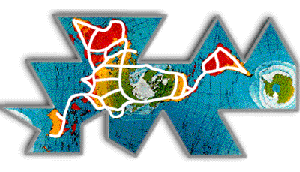 to develop a global electric energy grid to transmit power from continent
to continent just as present-day communications networks move information
and finances globally at the speed of light.
to develop a global electric energy grid to transmit power from continent
to continent just as present-day communications networks move information
and finances globally at the speed of light.
The first phase of such a project would be development of the East/West
Energy Bridge, a high-voltage, direct current (HVDC) intertie that would
link transmission lines in Alaska with those in Siberia, using an underwater
cable across the Bering Straits. Such an intertie would permit bulk
power transfers between the U.S. and (former) Soviet Union, taking maximum
advantage of the difference in power demand between the dayside and nightside
of the planet.
The cost of the Energy Bridge is estimated to be $5 billion -- less than
two conventional power plants -- but could save U.S. consumers many times
that amount by mid-decade, given the savings already being realized through
domestic power pooling.
The linkage would create the first truly global market for electricity
and also serve as a U.S. gateway for selling exported energy in Pacific
rim markets, including the world's most populous nation, China. About
25% of the world's population lives within four time zones bridging 90-120
degrees East longitude (compared with 8% in all of North America), many
of whom have yet to receive electrical service.
An international market for electricity also provides a long-range strategy
for developing renewable energy resources, such as solar, wave, wind, OTEC,
etc. Energy from these sources tends to be transient or intermittent
and is now discouraged by utilities in favor of power which is more dependable
and more easily dispatched. In a large international market, however,
even these sources find their niche, if only on a spot or auction basis.
Much of the conceptual work for this project was done in the early 1970's,
in workshops led by engineer and inventor, R. Buckminster Fuller.
In a 1971 study, the Natural Resources Committee of the United Nations
corroborated the desirability of developing "intercontinental grid systems."
In 1984, a World Bank Energy Department paper concluded that developing
a regional power pool for the isthmus of Central America would revitalize
local economies and save $1 billion annually in utility operating costs
alone.
Most recently, in January 1990, Canada's two largest utilities formed a
joint venture (the Canadian Interconnection Consortium) to study development
of a Middle Eastern power grid that would ultimately provide an electrical
linkage between Europe and Africa. The grid would link state-owned
utilities in Egypt, Iraq, Jordan, Syria and Turkey, probably with 400-kilowatt
transmission lines. The Gulf Co-Operation Council, which includes
Saudi Arabia, Kuwait, Bahrain, Oman, Quatar and the United Arab Emirates,
is also studying plans to join the project.
The American Society of Mechanical Engineers (ASME) has been studying the
Energy Bridge proposal since March 1989 and plans to conduct an international
workshop on the global energy grid project in Kuwait in February 1991.
And in March 1990, the U.S. Department of Energy recommended the Energy
Bridge proposal for further study. "The (Energy Bridge) proposal
is an innovative approach that I believe merits further analysis by the
DOE staff," according to Linda G. Stuntz, Deputy Under Secretary for Policy,
Planning and Analysis at the U.S. DOE. "In preparing the National
Energy Strategy, (Secretary of Energy) Admiral Watkins has stated that
he wants full consideration given to proposals like this," Stuntz said.
Global
Economies of Scale
While they are beyond
the scope of this article, the economic and political implications of global
energy strategies deserve some elaboration here.
It is clear that all trade relationships are based on reciprocity; each
trading party must receive goods/services/wealth of equal value to those
given, if the trade relationship is to continue.
It is equally clear that money or currency has an advantage over bartered
commodities in facilitating trade relationships. While money is a
more abstract form of wealth than gold or foodstuffs, it has value which
is mutually agreed upon -- its reciprocal value -- and as such, is more
easily converted into other forms of tangible wealth than basic commodities
are; that is, money is more liquid than commodities.
Less clear are the subtle but similar trading advantages that electricity
may offer over 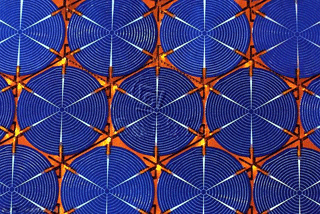 money;
very simply, it is a more liquid (but less abstract) form of wealth and
one which is increasingly more relevant to macroeconomic processes.
As physicist Fritjof Capra has argued: “The entire concept of money
is becoming ever more abstract and detached from economic realities...
In today's global banking and financing system, the units of money can
be distorted almost at will by the power of large institutions... (and)
the widespread use of credit cards, electronic banking and funds transfer
systems ... make it almost impossible to use money as an accurate tracking
system of economic transactions in the real world... (However) energy
is becoming one of the most important variables for measuring economic
activities... Energy modeling, pioneered by engineer [and University of
Florida professor] Howard Odum, is now pursued in many countries ... (and)
the mapping of flows of energy is rapidly becoming a more reliable method
for macro-economic analyses than conventional monetary approaches.”
money;
very simply, it is a more liquid (but less abstract) form of wealth and
one which is increasingly more relevant to macroeconomic processes.
As physicist Fritjof Capra has argued: “The entire concept of money
is becoming ever more abstract and detached from economic realities...
In today's global banking and financing system, the units of money can
be distorted almost at will by the power of large institutions... (and)
the widespread use of credit cards, electronic banking and funds transfer
systems ... make it almost impossible to use money as an accurate tracking
system of economic transactions in the real world... (However) energy
is becoming one of the most important variables for measuring economic
activities... Energy modeling, pioneered by engineer [and University of
Florida professor] Howard Odum, is now pursued in many countries ... (and)
the mapping of flows of energy is rapidly becoming a more reliable method
for macro-economic analyses than conventional monetary approaches.”
For these reasons, electrical energy may offer substantial strategic advantages
over currency in fostering new international trade relationships.
A key barrier to trade with the (former) Soviet Union today, for example,
is the country's lack of hard currency with which to trade.
It should also be pointed out that while money and information (intangible
wealth) are routinely transported over global networks, electrical power
(which may be harnessed to perform work, a tangible value) cannot now be
traded in this way; it is almost as though modern industry has overlooked
the obvious.
Finally, while the U.S. alliance with NATO countries has served well for
nearly 50 years, it is not yet certain how well this relationship will
bear up after the emergence of the European Community (EC). The EC
has made great strides over the past decade in standardizing its international
"power pool," which currently interconnects with Eastern block partners.
Increasingly, the U.S. may look westward toward the Pacific rim in search
of new trading partners, should the old alliance begin to falter.
China's Premier Li Peng, for example, is intimately familiar with the politics
of energy. Li was trained primarily as an engineer in the (former)
Soviet Union and spent most of his early career running power projects,
becoming China's minister of power in 1979 and vice premier in 1983.
Energy:
Florida's New Cash Crop?
Much closer to home, a Florida utility is already exploring the prospect
of giving its customers a franchise to produce power on a regular basis.
In fact, in one scenario, electric energy could become Florida's new "cash
crop," which even the average homeowner could harvest and sell, on margin.
The St. Petersburg-based utility, Florida Power, is currently testing a
photovoltaic array called Solar Progress, "to find out whether customers
will be able to install their own solar-powered systems and connect to
the Florida Power system," according to a recent press release. "Excess
power could be sent to the utility for credit. On cloudy days and at night,
homes could draw power from the utility company."
After its first full year of operating the array, the Florida Solar Energy
Center reported that installing Solar Progress-type panels on 160,000 Tampa
Bay homes would yield a total daily output of about 200 megawatts, about
one-third the capacity of a typical coal-fired plant.

In addition, the largest builder in Brevard County (Florida), The Charles
Wayne Group, recently introduced a prototype solar home which produces
more electricity on an average day than it consumes; a planned community
of these homes represents, in effect, an "energy farm."
When viewed alongside the proposal for a global energy grid, these projects
suggest a dramatic strategic vision for Florida in the 1990's, one in which
a homeowner in St. Petersburg, Florida could capture kilowatts to be sold
to residents in St. Petersburg, Russia ... thus participating directly
in the "global marketplace."
Much remains to be seen before this vision becomes a reality, but as futurist
Alvin Toffler has pointed out, the future is almost never what one expects
it to be, and for good reason:
“To ask what is going to happen next is to ask ... what the most probable future is. But the most important elements of our daily environment, for any business, society or individual, are often a result of improbable things [e.g., the rise of OPEC, the break-up of AT&T, the Challenger tragedy, etc.]. And frequently these have the most impact ... If you consciously devote some of your attention to low-probability, high-impact changes, you may be prepared for the biggest changes of all. Leadership and managerial excellence depend on having a sense of the big changes and acting on them before they're obvious to everyone else.”
This article was first published in 1990.
Michael Powers is a San Diego energy marketing consultant formerly based in the Tampa Bay area.
Return to Home Your Comments, Please